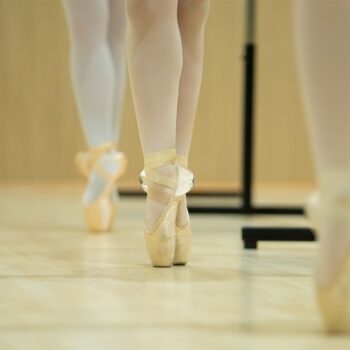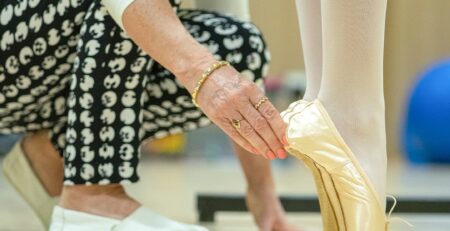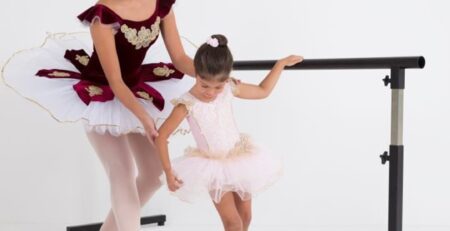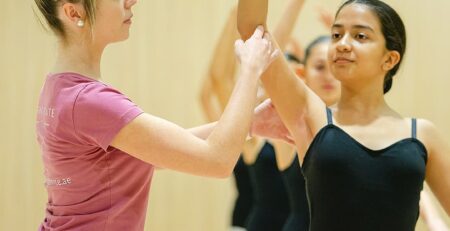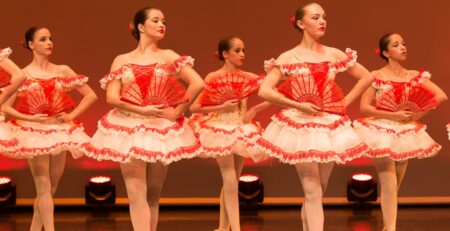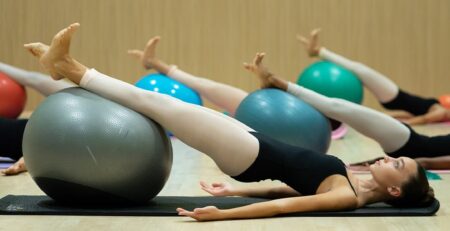Stepping Into History: Who Invented Pointe Shoes?
Pointe shoes are more than just a tool for dancers; they represent the grace, dedication, and athleticism of ballet. These shoes hold a special significance for dancers, marking a significant milestone in their journey towards mastery. But who invented pointe shoes, those mystical accessories that have become integral to the ballet world?
The Evolution of Pointe Shoes: A Journey through History
Let’s take a trip back in time to understand the evolution of pointe shoes. In the early days of ballet, dancers wore heeled shoes that were fashionable at the time. However, in the 1730s, a dancer named Marie Camargo from the Paris Opéra Ballet made a bold decision. She removed the heels from her shoes and created a softer and more flexible slipper-like shoe. This innovation allowed her to perform leaps and quick movements that were impossible with heeled shoes. Camargo can be credited with pioneering the ballet slipper, which laid the foundation for developing pointe shoes.
Later in the 18th century, Charles Didelot, another dancer from the Paris Opéra Ballet, made a significant contribution. He designed and created the “flying machine,” a groundbreaking invention that enabled dancers to elevate themselves and balance on their toes before leaving the ground. His innovation allowed dancers to ‘fly’ onstage, thus introducing the concept of dancing on pointe and giving birth to the illusion of weightlessness that would become the hallmark of ballet.
The Birth of Pointework: Pioneering Ballerinas
In 1823, Italian dancer Amalia Brugnoli performed the first instance of pointework in a ballet called “Armand Vestris’ La Fée et le Chevalier.” Although her square-toed satin slippers required visible effort to rise onto her toes, her performance inspired other dancers of the time, including the iconic Marie Taglioni. Brugnoli’s introduction of this technique was a significant milestone in ballet’s development.
In 1832, a significant milestone unfolded in ballet as Marie Taglioni took centre stage in her father’s masterpiece, “La Sylphide”. During this momentous performance, Taglioni made history by gracefully becoming the first ballerina to dance a full-length ballet on her toes. Her shoes were tight-fitting, leather-soled satin slippers tied with ribbons, quite different from the pointe shoes we see today. But for Taglioni and many other ballerinas of the Romantic era, these shoes were not only for performance but also to express character and emotion.
Also Read: HOW TO SEW ELASTIC ON BALLET POINTE SHOES!
Italian Influence: Reinforced Shoes of the 19th Century
In the late 19th century, Italian shoemakers revolutionised pointe shoe design by introducing reinforced shoes with sturdy boxes. These advancements provided incredible support and stability for dancers, enabling them to perform complex movements on their toes. The influence of these innovations quickly spread worldwide, captivating the attention of ballet communities and inspiring choreographers from different regions to incorporate pointework into their compositions.
The introduction of reinforced pointe shoes transformed ballet, allowing dancers to embody characters with more depth and grace as they elegantly manoeuvred on their toes. These advancements marked a turning point in ballet history, expanding artistic expression and pushing the boundaries of technical abilities in the art form.
Anna Pavlova: Making Strides in the 20th Century
Anna Pavlova, a renowned ballerina of the early 20th century, brought pointe shoes into the modern era. Her distinct attributes included high, arched insteps and slender, tapered feet. To address her feet’ unique characteristics, Pavlova modified her shoes. She incorporated toughened leather soles to provide additional support and stability. Moreover, she flattened and hardened the toe area, creating a box-like structure. These adaptations closely resemble the construction of pointe shoes worn by dancers today.
Given her contributions and innovations, it is fair to attribute the invention of modern pointe shoes to Anna Pavlova. Her profound influence on ballet and her efforts to enhance the functionality and comfort of dancers’ footwear make her a significant figure in the history of pointe shoe development.
The Modern Era: Advancements in Pointe Shoe Design
During the modern era of pointe shoes in the 1990s, there was a remarkable leap forward in their construction, closely following the advancements in athletic footwear. Gaynor Minden, a leading force in this transformation, introduced a revolutionary concept by harnessing modern materials and incorporating cutting-edge shock absorption technology into their designs. This pioneering approach opened up new horizons in pointe shoe innovation, focusing on improving shoe durability and fit.
Dancers now had access to footwear that offered exceptional comfort and support and ensured longevity, allowing them to perform at their best for longer periods. The fusion of innovative materials and practices in pointe shoe construction during this era transformed the dance world, enabling dancers to push the boundaries of their art with enhanced ease, grace, and confidence.
Ballet and Beyond: Pointe Shoes in the Modern Age
Pointe shoes have evolved and adapted to contemporary needs in the digital era. As dance techniques become more intricate and demanding, pointe shoes’ design and manufacturing process has also developed. They’re now made with various materials, from traditional paste and fabric to innovative gel padding for enhanced comfort and support.
Regardless of the advancements, the spirit of the pointe shoe remains the same. They continue to serve as an indispensable part of a dancer’s journey, facilitating the elegant balletic movements that have mesmerised audiences for centuries.
Today, pointe shoes have gone beyond ballet and have become a cultural symbol. They fascinate artists, photographers, and fashion designers, solidifying their place in history and popular culture.
Also read: WHERE TO BUY DANCE SHOES: A COMPLETE GUIDE
The Anatomy of a Ballet Pointe Shoe
Understanding the various parts of a ballet pointe shoe is essential to appreciate its construction and functionality:
- Box: The reinforced area at the front of the shoe supports the dancer’s toes. It is typically made of layers of fabric and glue, shaped to provide structure and protection.
- Shank: The stiff part of the shoe that runs along the foot’s arch, providing stability and support. It can be made of various materials, such as plastic or layers of cardboard and fabric.
- Vamp: The front part of the shoe that covers the toes and can vary in length and shape. It is designed to support and create a smooth line from the foot to the leg.
- Ribbons and Elastic: Used to secure the shoe to the dancer’s foot, providing stability during performances. Ribbons are typically tied around the ankle, while elastic bands across the arch help keep the shoe in place.
- Dance Classes in Abu Dhabi and Dubai
If the rich history of pointe shoes inspires you and you want to embark on your own ballet journey, Turning Pointe offers various dance classes in Dubai and Abu Dhabi. Our experienced instructors provide expert guidance, helping students develop their technique and artistry. Whether you’re a beginner or an advanced dancer, these classes offer the opportunity to learn and grow in a nurturing and inspiring atmosphere.
Final Thoughts
The question “who invented pointe shoes?” has no simple answer. Instead, it’s a testament to the contributions of countless dancers, cobblers, and innovators over centuries. From the rudimentary slippers of Marie Taglioni to the meticulously crafted footwear of today, pointe shoes have danced alongside the evolving rhythm of ballet.
As we move towards the future, pointe shoes will continue to adapt and evolve as they have throughout history. It’s a dance of progress that will carry on, creating an ever-lasting legacy and inspiring future generations to reach new heights of excellence.



